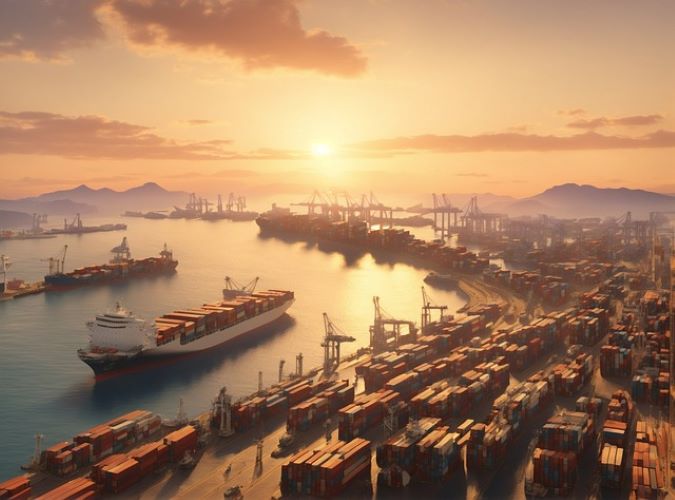SINGAPORE - Singapore and five other Asean countries have received most of the investment flows as companies diversify their supply chains and adopt a China-plus-one strategy, economists said.
Foreign direct investment (FDI) inflows into the Asean economies of Indonesia, Malaysia, the Philippines, Thailand, Singapore and Vietnam have been gaining traction, although there are some differences across sectors and countries, they added.
Inflows into the region rose to US$236 billion (S$318 billion) in 2023, compared with the annual average of US$190 billion from 2020 and 2022.
The major contributors were the United States, Japan, Europe, as well as mainland China and Hong Kong, attracted by the region’s strong domestic reforms, which have led to improving macroeconomic fundamentals.
Many firms have diversified their operations away from China, following the Covid-19 pandemic and amid rising geopolitical tensions between Beijing and Washington.
According to the American Chamber of Commerce in Shanghai, 40 per cent of those surveyed in 2023 had redirected investment or planned to redirect investment originally meant for China.
For these companies, South-east Asia was the most preferred destination, with technology hardware, software and services companies looking at Singapore. The US was the second most preferred destination, followed by Mexico, the survey showed.
In its latest report on Asean penned by its economists Lavanya Venkateswaran, Ahmad Enver and Jonathan Ng, OCBC Bank said Singapore received the bulk of the inflows, followed by Indonesia, Vietnam, the Philippines, Malaysia and Thailand.
Most investments into the region went into manufacturing, financial and insurance, transportation, construction and wholesale sectors.
FDI inflows from China into the region, which tumbled during the pandemic in 2020, have since rebounded, but the nature of its investments into Asean has shifted from infrastructure to electronics, resources and food industries.
The manufacturing, wholesale and retail trade, finance and insurance, real estate and professional services sectors have seen higher FDI inflows from China too.
China has become one of the top contributors to FDI inflows in Indonesia, surpassing the US and Japan. Indonesia accounted for almost a third of China’s investment in Asean in 2022.
Most of its investments are parked in the manufacturing sector, OCBC economists said.
In contrast, the Philippines has not benefited as much from Chinese investments. This is not surprising, given geopolitical tensions between the two countries have worsened in recent years, they said.
Singapore continues to be the largest recipient of FDI from China, reflecting the Republic’s status as a financial hub with strong synergies in the manufacturing, real estate and services sectors.
Mainland China and Hong Kong’s share of the total FDI into Singapore has been rising in recent years, from almost US$52 billion in 2015 to US$113.2 billion at the end of 2022.
Chinese tech giants such as Alibaba, Tencent and ByteDance have set up regional offices in the Republic.
According to Enterprise Singapore, there were over 400 Shanghai companies in Singapore as at end-2022.
Beyond South-east Asia, India and Mexico have also benefited, Nomura’s economist Sonal Varma said, noting that trade diversion and reshoring decisions have shifted to take in production relocation.
Firms in electronics, apparel and toys, automobile and components, capital goods, as well as semiconductor manufacturing, are looking to invest in India, in part due to its large consumer market, she added.
In Vietnam, foreign interest has shifted away from textile manufacturing to other parts of the sector, including automobiles, electronics, solar panels, shipping containers and chemicals.
Gains to the rest of Asean are more mixed, with Thailand drawing more interest in electric vehicles (EVs), printed circuit boards and consumer durables, while Indonesia’s prospects are tied mainly to the development of the EV battery supply chain.
“Among the front runners, we think Vietnam will remain a strong beneficiary. In contrast, given its structural constraints, benefits to Thailand will likely be confined to low-value-added sectors, with the exception of perhaps the EV segment, which could leverage the strong domestic auto supply chain,” said Ms Varma.
In India, Nomura sees investment opportunities in stocks related to the electronics and semiconductors, autos, solar energy, pharmaceuticals and defence sectors.
In Thailand, opportunities are seen in stocks involved in electronics, automotive and industrial estates, while in Indonesia, those are in the metals and mining space.
However, Ms Varma warned that equity investors looking to leverage the shift in supply chain trends must be patient as the transition takes time.
Source: The Straits Times
Link: Here
June 13, 2024













